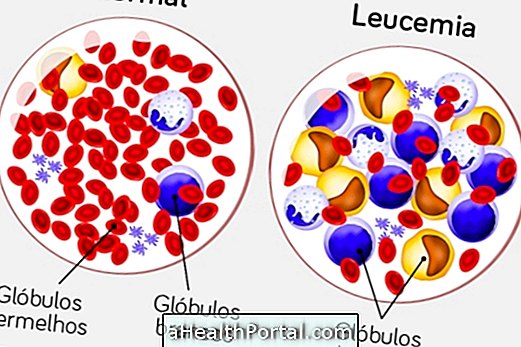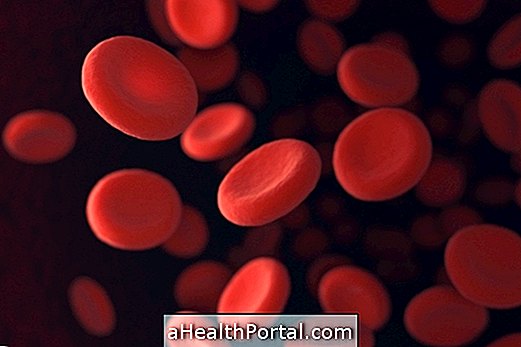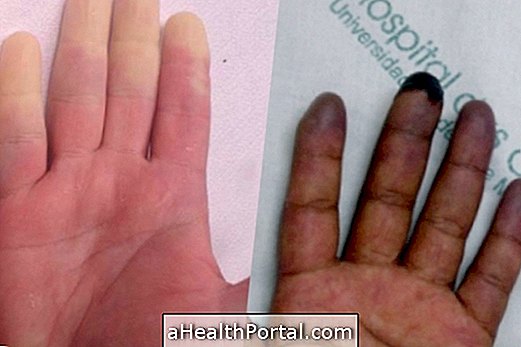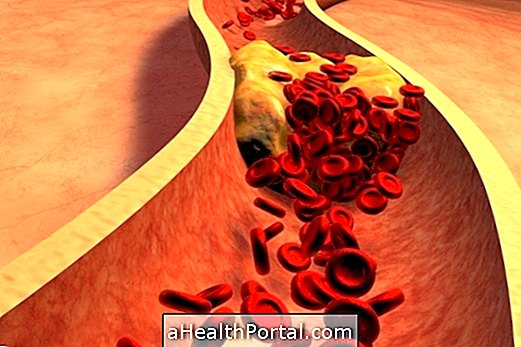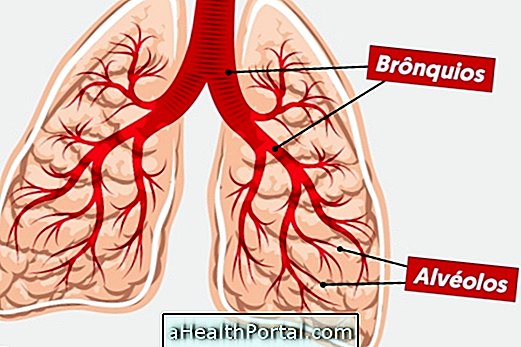Acidosis of the blood is characterized by excess acidity, causing a pH lower than 7.35 which are generally caused as follows:
- Metabolic acidosis : loss of bicarbonate or accumulation of some acid in the blood;
- Respiratory acidosis : accumulation of carbon dioxide (CO2) in diseases that affect breathing diarrhea, kidney disease, generalized infection, heart failure or intoxication by the use of acid substances.
The normal blood pH should be between 7.35 and 7.45, as this range allows the body's metabolism to function properly. Acid pH causes symptoms such as shortness of breath, palpitations, vomiting, drowsiness, disorientation and even death risk if it becomes severe and is not treated for pH regulation.
In addition to acidosis, the pH may become more alkaline, above 7.45, which can occur in both metabolic alkalosis and respiratory alkalosis.

1. Metabolic Acidosis
Metabolic acidosis is caused by accumulation of acidity in the bloodstream, either by the loss of bicarbonate or by the accumulation of different types of acid.
What are the causes
The possible causes of acidity in the blood are the loss of alkaline substances, such as bicarbonate, or the accumulation of acids in the bloodstream, such as lactic acid or acetoacetic acid, for example. Some of the situations that lead to this are;
- Diarrhea;
- Renal diseases;
- Generalized infection;
- Bleeding;
- Cardiac insufficiency;
- Diabetic ketoacidosis;
- Intoxication, with ASA, alcohol, methanol or ethylene glycol, for example;
- Injury of various muscles of the body, what happens in cases of performing strenuous exercises or in diseases such as leptospirosis, for example.
It is important to remember that another cause of blood acidity is respiratory acidosis, caused by accumulation of CO2 in the blood due to lung problems such as severe asthma or emphysema, impaired breathing disorder such as ALS or muscular dystrophy or any other disease that makes breathing difficult.

Main symptoms
Metabolic acidosis can cause a number of reactions in the body that influence respiration, brain reactions, heart function and body metabolism. The main signs and symptoms include:
- Shortness of breath;
- Increased respiratory rate;
- Palpitations;
- Nausea and vomiting;
- Headache;
- Drowsiness or disorientation;
- Low pressure;
- Glucose intolerance.
In some cases, patients with metabolic acidosis may go into a coma and be at risk of death if treatment is not started quickly.
The confirmation of the metabolic acidosis is made by the examination called arterial gasometry, able to obtain the values of the pH and several other data on the arterial blood. Find out more details about this exam for what the arterial blood gases are for. In addition, other tests, such as urinalysis or blood toxic levels may help determine the cause of ketoacidosis.
How to treat
Treatment for metabolic acidosis should be done at hospital admission and, generally, correction of the disease causing acidosis is sufficient to improve the condition, such as insulin administration in case of diabetes, toxic substance detoxification, besides hydration with serum in the vein.
In cases where there is loss of sodium bicarbonate, such as in diarrhea or vomiting, oral replacement of this substance may be indicated. However, in some cases of severe metabolic acid, the administration of bicarbonate in the vein may be necessary to decrease acidity more rapidly.

2. Respiratory acidosis
Respiratory acidosis is the excess of acidity in the blood that occurs due to decreased ventilation in the lungs due to breathing difficulties, which leads to increased concentration of carbon dioxide (CO2) in the bloodstream.
What are the causes
Generally, respiratory acidosis is caused by lung diseases such as severe asthma or emphysema, as well as other diseases that can prevent respiration, such as amyotrophic lateral sclerosis, myasthenia gravis, muscular dystrophy, heart failure or when there is cardiac arrest, for example.
Main symptoms
Although not always causing symptoms, respiratory acidosis can cause shortness of breath, sweating, dizziness, purple ends, coughing, fainting, palpitations, tremors or seizures, for example.
To confirm the diagnosis, the arterial blood gas test, which detects the blood pH values and the dosage of substances such as CO2 and bicarbonate, is also performed, and the doctor will also make a clinical evaluation to identify the cause.
How to treat
The treatment of respiratory acidosis is done to improve the patient's breathing, whether with pulmonary treatments, oxygen use or even the use of mechanical ventilation devices in the most severe cases.


